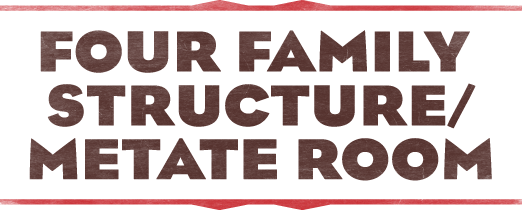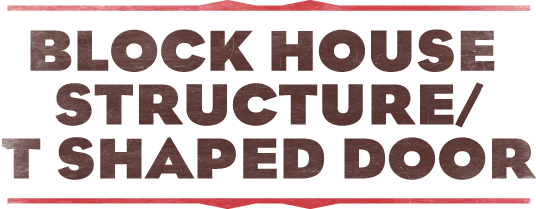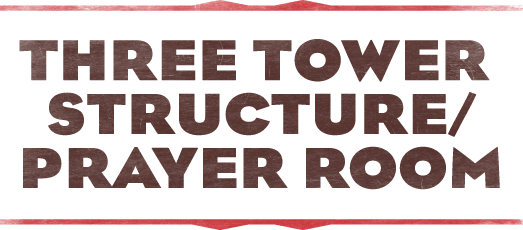


Welcome to the Manitou Cliff Dwellings and Museum. Most everyone agrees that these dwellings haunt our very imagination. They are a look into the past, long, long ago when a people called Ancestral Puebloans lived in these structures. They could not write and were not written about, but we do know they lived in this region from the time of Christ to around 1300 A.D. Only 4 to 5 feet tall, these short and dark-haired people had a life span of around 35 years. The cliff dwellers were very efficient with their resources and utilized existing materials from their environment for their homes, clothing, and food. They wore robes of fur and sandals made from yucca. They made pottery with ropes of clay tempered with sand, fired, and then decorated with black geometric designs. They wove baskets to carry water, berries, and even babies. They wore turquoise and polished stones. Still, much of who they were remains a mystery.
Some dwelling locations had as many as 5000 people with hundreds of rooms. It is clear that the level of perfection achieved in wall construction and plastering was remarkable. The Manitou Cliff Dwellings Museum and Preserve was first opened to the public in 1907. Over a three year period, from 1904 to 1907, these cliff dwellings were carefully relocated here in Cliff Canon in order to preserve them. As you tour through these dwellings, they were preserved with a concrete mortar as opposed to an adobe mud mortar. Today we are going to explore a people, place, and a time that has more questions than answers. Please explore the architecture of these fascinating people while carefully continuing to preserve and protect them for future generations to enjoy.




Puebloans are the descendants of ancient cliff dwelling people. By studying the lifestyle of the modern Pueblo people, we have been able to learn how their ancestors lived hundreds of years earlier. The Cliff Dweller’s society, as well as the Puebloan, was matrilineal, meaning that the line of descent is through the women, not the men. This included not only property, but also inheritance. The husband lived with his wife in HER house, and their children belonged to HER clan.
The Ancestral Puebloans were very spiritual people. Most important of all the powers was the Sun, who is the father and closely allied with the Mother Earth. They worshipped many gods who controlled rain, plants, the flow of rivers and springs, and many other aspects of life. If there was discord among the natural forces, the result was drought or famine.
This structure was a four family home. It consisted of two rooms above and two rooms below. The outer wall collapsed causing the floor of the second story to eventually give way. The large rectangular openings are doors and the smaller opening is a window. The small wooden pegs sticking out from the top of the structure were used to hang meat and vegetables to dry in the sun, which preserved their food. About 6-10 people are believed to have lived in each house. Because of this, little time was spent indoors.
In the lower room on the right, there is a grouping of grinding stones called "metate" stones. These metate stones were used to hold corn in place while a smaller "mano", or hand stone, was slid back and forth across the face of the metate. This slow, tedious work was done day after day to make cornmeal. The soft sandstone metate had one fault. It produced a gritty cornmeal as sand from the metate stone chipped off and mixed into the cornmeal. After a lifetime of eating this gritty cornmeal, it ground away the enamel of their teeth, causing the cliff dwellers to suffer from decayed and abscessed teeth.


The ceremonial kiva was a religious structure used for various ceremonies. The kiva itself is believed to symbolize the womb of Mother Earth. Except for certain ceremonies, women were not allowed in the kiva. A small hole in the floor, known as the Sipapu, was believed to be a symbolic entrance to the spirit world. Besides the sipapu, the kiva usually consisted of a firepit, airshaft opening, air-deflector, as well as small storage shelves for ceremonial items. The kiva is usually located at the center of the village, and more than one kiva is often present. The roof consisted of crib style logs and sticks, thatched together and then packed with adobe mud. An opening at the center of the kiva, above the firepit, was where a ladder was used to enter and exit the kiva. Entering through the rising smoke was believed to cleanse the men and prepare them for the ceremony.


This box-like structure, made from sandstone slabs, was used for storing a small amount of corn, beans, and squash. The sides were very smooth to make it harder for rodents to climb. The openings at the top and in the front were covered with thin sandstone slabs and then sealed with adobe to prevent rodents from entering. Dry corn leaves and tassels lined the bin to protect the grain from dampness. Corn was the staple crop and eaten daily, but they supplemented their diet with wild roots, nuts, and berries, as well as the meat from animals. Because of its hardiness and resistance to drought, the cliff dwellers grew Flint corn on the mesa tops and in the valleys.


This large room, located directly behind the dwellings, was primarily used for refuse and trash storage. It is also where the Ancestral Puebloans kept some of their turkeys. Their trash consisted of ashes, corncobs, plant scraps, uneaten food, and animal bones and hides waiting to be cleaned and sorted, as every part of an animal was put to use. During the winter, when the ground was frozen, burials were made in the refuse room. These bodies were wrapped in plant materials and animal hides to help preserve them. The chill of winter prevented decay and the body dried out and became mummified. In the Spring, when the ground had thawed, proper burials were made.
As you enter this Refuse room, you can hear the voice of an old Puebloan chief, a direct descendant of the cliff dwellers, welcoming you to the cliff dwellings.


This dwelling was a two story, two family home. Notice the T-shaped doorway. T-shaped doors were less common than the rectangular doors and may have been built for easier access. The hand rests, where the T gets narrow, were used as a support for the elderly to permit easier access. The wider portion at the top of the T doors made the access easier to those burdened with a basket or cradleboard on their back. All of the doors in the village were built off the ground, forcing villagers to climb inside of the home. This was done to prevent access by small rodents and animals, as well as water from rain storms. The raised doors also helped to keep small children safe inside the homes. Once the child was old enough to climb out of the house, the child was old enough to know her way around the dwellings safely.


Most archaeologists believe this structure was used as a lookout or watch tower. The entrance was at the base of the structure. Instead of ladders, timbers were inserted through small openings which ascend as they circle the tower. This created a makeshift set of stairs leading to a platform at the top. While the use is not certain, it is believed that the tower was primarily used to look for animals to hunt, enemies coming to raid the village, and dangerous approaching storms. Villagers were notified of the observations and reacted accordingly. In some locations, the watch towers were built adjacent to the kivas, and were connected by a tunnel.


This dwelling is thought to be the Chief’s house. While small, it is the largest house in the village. In front of the house is a platform or stage. This is where the Chief would gather the villagers and speak to them, making announcements, or telling stories gathered through the years. Often times the Chief of a village was a male, but it was not uncommon to have a woman leader. The state of California was named after a female leader, Queen Califia.


This three story structure looks more like a tower than an apartment. In the lowest room, note the "alter-like" stone and mortar bench and water basin built into the ground floor. It is believed this may have been used in ceremonies to prepare the dead for burial. Generally, when death came, the cliff dwellers prepared the body by folding the legs up against the chest and wrapping them in yucca matting and animal hides. Personal possessions were placed with the body, such as tools, bowls, and jewelry. The spirit of the dead person, along with the spirit of his personal possessions, would then journey through the Sipapu back into the spirit world.


This dwelling is a two story, four family structure. Note the two distinctly different plans of timber understructure of the second floors. The upper room on the left is larger, which may be the reason double timbers were used as opposed to the single timbers of the floor on the right. Due to the upper rooms being less accessible, they were often used for protection during raids from opposing tribes. The ladder on the outside was normally not there and the only access to the upper rooms was through a ladder on the inside of the lower left room. During raids, women and children were placed in the upper rooms and the ladder was removed. By placing stone slabs over the doorways, they were kept safe while the men fought below.


This dwelling is a three story, three family structure. Rooms were built on top of one another in order to create more rooms to accommodate more families within the limited space of the overhanging cliffs. All the floors collapsed when the outer corner of the tower structure gave way, revealing the beautiful paintings on the wall of the third story house. The symbolism of this pictograph, or painting on stone, is not known. It has been theorized that this pictograph may represent rain symbols, a plea to their rain god for some much needed moisture due to the unprecedented drought in the entire Southwest that began 1276 A.D.


This structure was used primarily for the storage of corn. Its construction represents that of a present day silo. The T-shaped door at the top provided access to fill the silo. An opening at the base allowed for withdrawal. Openings were carefully closed with stones and then sealed with adobe to protect against rats, mice, and weevils. The Ancestral Puebloan farmlands were usually on the mesa tops or down in the valleys. Corn, beans and squash were all raised, but corn was the most prevalent crop. The cliff dwellers developed complex irrigation systems, complete with ponds and dams to provide crops with water. Their diets were supplemented with pinon nuts, roots, fruit, seeds, and berries. They had domesticated the turkey and the meat and feathers were highly prized. They also hunted deer, mountain sheep, foxes, coyotes, and rabbits. Almost every part of the animal was used for something; nothing went to waste. The meat, including the internal organs, was all eaten. The hides were used for clothing, blankets, and covering doorways. Sinews were used for bow strings and sewing and the bones were made into tools.


This dwelling, one of the largest communals built by the villagers, is a three story, nine family structure. The rooms were small, averaging six by eight feet and five and a half feet high. The floors of the second and third stories were made of large timbers, covered with smaller sticks, then bark, and finished with a layer of clay. There is no evidence that the people had fires inside the small, unventilated rooms; the smoke would have been unbearable. The rooms were small enough that with a closed door, occupants huddling together could create their own heat. The mortar lintels at the top of the doors served to secure the sandstone slab doorstones, which rested on the inside door sill and leaned against the lintel. The protruding timbers from the front of the third floor would have been used as a balcony, which was reached by a ladder. Inside the small rooms, you will note niches in the walls. Evidently they were used for storing household articles or sacred objects.


This dwelling was built nearest the crops. It is believed this was a summer living quarters, used primarily by the men while tending their crops. The crops were watched day and night in order to keep the birds and animals away. This structure also served as a corn-grinding room. Grinding stones, called mano and metate stones, were used to grind the corn into a fine flour to bake into bread. Women and sometimes younger children were primarily responsible for grinding the corn into meal. Often times, especially during preparation for feasts, men would sing to the grinders.

Thank you for visiting the Manitou Cliff Dwellings. Please be sure to visit our Museum with Ancestral Puebloans artifacts and Gift Shop with Colorado and Native American made souvenirs.